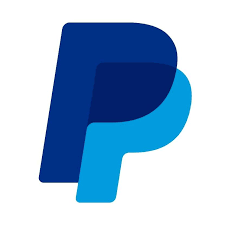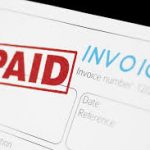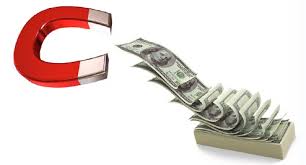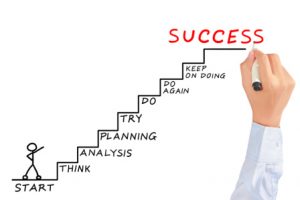
The start of a new year also means that it’s the perfect time to revisit old business strategies from last year so that you can maximize your revenue for 2019. If your financial numbers were fantastic last year, that’s great! Keep the strategies that worked for you and cut the ones that didn’t.
If your financial numbers weren’t amazing last year, or maybe you’re just interested to see how you can increase your revenue, we have you covered. Here are 10 ways that you can boost your revenue this year:
- Revisit your current prices and make adjustments as necessary.

Many people will tell you that increasing your prices will increase your profits, but that’s not necessarily true. Increasing your prices by a small amount might increase your profits without turning away existing customers, but make sure you research your value and your competitors’ prices and adjust based on what makes sense in your market.
- Bundle your services or products together.
Make your products or services more attractive by bundling them together and pricing them at a better deal than purchasing the services or products separately. Customers who only want one particular product or service should still be able to purchase the product or service à la carte, but offering different packages of increasing value makes it much easier to upsell to customers and increase your business revenue.
- Offer free gift with purchase.
 Tacking on a complimentary or free service to your products or services could be the small push needed to close sales. Even better, you could add a complimentary or free service to your highest-quality bundle. As an example, the cosmetics industry has been doing this for decades.
Tacking on a complimentary or free service to your products or services could be the small push needed to close sales. Even better, you could add a complimentary or free service to your highest-quality bundle. As an example, the cosmetics industry has been doing this for decades.
- Start a new product or service line.
If you’re limited to just a few products or services, it’s time to expand. If you mow lawns, offer a leaf collection or snow removal service. If you sell shoes, add socks. If you manage a restaurant, consider offering adult beverages. Expanding the scope of what you’re selling will provide you with additional revenue.
- Expand your geographic reach.
If you’re still only offering services and products locally, consider expanding your reach, especially because the internet is so readily available nowadays. Think about which services you can offer virtually; some may require you to invest in cloud-based delivery systems. If you only sell products at a physical location, ecommerce is a huge industry and you could definitely increase revenue by having a storefront online.
- Learn to say “no” to bad clients.
This may seem counterintuitive, but learning to turn away bad clients is really important. When customers are unresponsive, ungrateful, unreasonable and just take up too many of your resources, you have to realize that they are unprofitable. By turning them away, you can devote more of your attention to building relationships with your best customers and creating new, profitable opportunities.
- Make your online presence known.
Everyone uses search engines and social media to find the right business to serve their needs, so make sure you can be found online. Create a website for your business and make sure you have business pages on social media platforms like Facebook, LinkedIn and Twitter. You’ll have to develop some marketing strategies and optimize your site to rank high, but, when done right, these channels can drastically impact the amount of revenue you receive.
- Manage your online reputation.
When you have many good reviews, your credibility goes up and your business is more appealing to potential customers. If your clients leave you an amazing testimonial, it’s a good idea to ask them to post it online as well—especially on Trip Advisor, Yelp, your Facebook Business Page, and Google Reviews. On the other hand, negative reviews will look bad to potential customers and can negatively impact your revenue, so make sure you respond appropriately to the review and show potential consumers that you care about getting things right.
- Encourage customers to sign up for a continuity program.
Do you have loyal customers? Reward them by offering a membership or continuity program with VIP benefits. Retail, restaurants, and service businesses can set up privileges like faster service, discounted prices, and frequent purchase rewards that many consumers will pay a small monthly fee for.
- Encourage customer referrals by building and nurturing relationships.
Connect with customers and build strong relationships through effective communication, providing exceptional service, getting feedback, addressing concerns, and showing appreciation. Doing so can increase repeat customers, customer referrals and your business revenue.
If you’re looking to boost your business revenue this year, definitely give these strategies a try. If you would like specific suggestions for your business, please reach out.
 One of the biggest challenges for small businesses is managing cash flow. There never seems to be enough cash to meet all of the obligations, so it makes sense to speed up cash inflows when you can. Here are five tips you can use to get your cash faster or slow down the outflow.
One of the biggest challenges for small businesses is managing cash flow. There never seems to be enough cash to meet all of the obligations, so it makes sense to speed up cash inflows when you can. Here are five tips you can use to get your cash faster or slow down the outflow.
- Stay on top of cash account balances.
If you’re collecting money in more than one bank account, be sure to move your money on a regular basis when your balances get high. One example is your PayPal account. If money is coming in faster than you’re spending it, transfer the money to your main operating account so the money is not just sitting there.
your money on a regular basis when your balances get high. One example is your PayPal account. If money is coming in faster than you’re spending it, transfer the money to your main operating account so the money is not just sitting there.
- Invoice faster or more frequently.
The best way to smooth cash flow is to make sure outflows are in sync with inflows. If you make payroll weekly but only invoice monthly, your cash flow is likely to dip more often than it rises. When possible, invoice more frequently or stagger your invoice due dates to smooth your cash balances. Or consider changing your payroll schedule to bi-weekly.
Take a look at how long it takes you to invoice for your work after it’s been completed. If it’s longer than a few days, consider changing your invoicing process by shortening the time it takes to send out invoices. Email invoices to your customers with a payment link. That way, you’ll get paid sooner.
- Collect faster.
Got clients who drag their heels when it comes to paying you? Try to get a credit card on file or an ACH authorization so you’re in control of their payment. Unless you have a compelling business reason, there is no need to extend 30 days to pay you. Change your payment terms to Net 7, 10 or 15 days.
Put a process in place the day the invoice becomes late. Perhaps the client has a question or misplaced your bill. Be aggressive about following up when the bill is past due. Turn it over to collections quickly; the older the bill is, the less likely it is to get paid.
- Pay off debt.
As your cash flow gets healthier, make a plan to pay off any business loans or credit cards that you have. The sooner you can do this, the less interest expense you’ll incur and the more profit you’ll have.
Interest expense can really add up. If you have loans at higher interest rates, you might try to get them refinanced at a lower rate, so you won’t have to pay as much interest expense.
- Reduce spending.
You don’t always have to give up things to reduce spending. Look at your expenses from last year and ask yourself:
- What did you spend that was a really great investment for your business?
- What did you spend that was a colossal mistake or waste of money?
- What do you take for granted that you can cut? What services are not being used?
- Where could you re-negotiate contracts to save a little?
- Where could you tighten up if you need to?
Managing cash flow is always a challenge, and these tips will help give you a little cushion to make it easier. If you would like us to help with specific suggestions for your business, please reach out.
Today is the perfect time to think about your business goals and where you want to be one year from now. As year-end wraps up, you’ll soon know your financial numbers for 2018. You’ll then be able to evaluate how you did and map out a new plan for 2019. 
If you’re like many small business owners, you may have started your business without a business plan. Most businesses don’t need a long 20-page document that will just gather dust on a shelf. But you might want to consider putting together a short, 1- to 2-page concise document that includes the basic components of a typical business plan: mission, vision, strategies, and objectives.
A mission statement describes what the company is in business to do. And while you could simply state a mission similar to “Our mission is to sell our products and services,” you may want to think bigger than that in terms of how you want to be known or to impact more than your customers.
A vision statement describes your company’s future position. It’s what you aspire to be. It could again be, “Our vision is to sell more products and services than any other business.” Or it could be more inspiring and uplifting. 
Your business strategies support how you’ll get from where you are to what is stated in your mission and vision statements. While there may be many ways to accomplish your mission and vision, strategies are the approaches you’ll take to get there.
Goals are measurable destinations with a timeline that are created from your strategies. Objectives finally get down to the nitty gritty and state the tactics and action plans you need to execute to put all of this work into play.
Each of these items can be written out on a few lines, taking up all together no more than a few pages. The benefits of having a concise business plan are many: if you think of an idea you want to do, you can check the plan to make sure your idea falls under your vision, mission, and strategies that you’ve laid out for the year. If it doesn’t, then you’ll know that your idea would take you off track from your plan, and you know how easy that can happen these days with all of the distractions and options available to us.
You may want to add additional sections to your plan depending on your strategies. If you plan to launch a new product or execute new marketing strategies, you might want to add a Market Summary section. If you seek new funding, you might want to have a section on funding options. With business planning, it makes sense to do what’s relevant, and nothing more or less.
We wish you the very best in 2019, and if we can help you with the financial portion of your business planning, please reach out.
With holidays approaching, this is the perfect time of year to take a moment and reflect on all of the things we are grateful for. Being grateful may sound a bit trite, but it’s also the number one, hands down, fastest way to bring more positivity and less negativity into your work and life.
Acts of gratitude are selfless and done unconditionally. You can use gratitude as a private exercise of reflection or you can express your gratefulness to show people that they are appreciated.
You don’t have to wait to feel gratitude; you can invoke it proactively.
If you don’t have a gratitude practice, consider starting one. Science has gotten involved in studying gratitude, especially in the field of positive psychology, and the benefits to health and well-being are enormous. It can benefit your business, too, when you show appreciation for business partners, employees, customers, and vendors.
Here are five easy ways to bring more gratitude into your work and life:
- Think of five clients you can send thank you notes to. You can write them by hand or send a greeting card with a thank you message.
- On your customer service email templates, add a line before the closing that says, “We appreciate your business.” It does make a difference.
- Quick, right now, think of five things you are grateful for and list them off the top of your head. After you’re done, you should feel a little bit happier than you did a few minutes ago. Use this tool after you feel a negative emotion to move you back into positivity faster.
- ________________
- ________________
- ________________
- ________________
- ________________
- Find part of your day that you don’t love, such as your commute to work. Change it to your gratitude commute, finding things along the way to be grateful for. You might be surprised how great you feel when you arrive at work.
- Let one of your employees know that you’re grateful for the work they do for you. You can do this verbally, with a note, or with a gift.
When you practice gratitude, you can’t help but feel happy for the things you have in your life. Try these five things on a regular basis to bring more gratitude and positivity into your work and life.
How well do you love the way you spend your typical workday? What would a typical workday look like if you had absolutely no constraints? Here’s a fun exercise to get you thinking about your future and how you can make small changes in your current day to move it toward your ideal day.
Get comfortable and begin jotting out what your ideal day looks like. Start with what you do before you get to work. How do you start your day? With a workout or breakfast or something else? What does breakfast consist of? Where are you eating? What do your surroundings look like?
How do you get to work? What is your commute like? List the sights, sounds, smells. Once you get to work, what do you do first? Will you spend time on the phone? With whom? At the computer? Do you go somewhere?
Do you get a nice break for lunch? Write it all down in detail, and continue until your post-workday routine. Who are you with? Where are you? What do you do?
Here’s a partial sample:
“Lunch with my two friends at our favorite Mexican restaurant on the beach. We laugh a lot, share stories, and part with hugs and handshakes. After lunch, I work on my favorite work project, which challenges me to think about how to help my employees gain new skills. While I work, I listen to my favorite music CD. In a few hours, I am ready for a stretch break and walk outside to water the plants. After break, I return calls, talking with my clients and catching up on how to best serve them. …”
OK, now it’s your turn. Here are some questions to consider while you do this exercise:
- What’s important to you to spend time on?
- What’s enjoyable that you would really like to have as part of your daily routine?
- What activities will give you a nice balance of accomplishment, relaxation, and socialization, even during work?
- What do you need to include in your ideal day to get your needs met?
Change One Thing
Getting to your ideal day can take time. Don’t try to change your whole routine all at once. What one or two things can you pull out of your ideal work day description that you could bring into your current work day to brighten it with happiness? In the description above, this person might block out time to find employee training, go out for lunch instead of eating at her desk, make a new playlist, delegate tasks that are not part of her ideal day, or take more time when returning client calls.
Make gradual changes in your current day to improve it. With each change, you’ll be moving toward the realization of your ideal day. And if your ideal day doesn’t include bookkeeping but your current day still does, we’re here for you.
Internal control is a very special phrase in the accounting profession. Tactically, it’s the set of processes that help a company produce accurate data throughout the organization, follow reporting requirements and laws, and maintain consistency and accuracy in its operations. Strategically, it’s an entirely new way of thinking and doing business.
Internal control helps to reduce organizational risk. A blunt way of putting it is internal control is what you put in place to avoid mistakes, intentional or accidental, and to control accuracy and quality. It impacts every aspect of an organization.
As a small business, you’ll want to be familiar with the concept because it can help you reduce risks you might not realize you have. Here are some practical examples of good ideas that support internal control:
- When data is private and secure, provide access only to employees who need to know the data and restrict access of others.
- Have someone check that your bank balance matches the reconciled amount in your books, and that someone should be different from the person who does the reconciliation. This is an example of what’s called segregation of duties.
- Lock up paper checks and use the missing check number report to make sure none of the stock could be used for nefarious purposes.
- Have employees sign in and out equipment that they take home. This is part of asset management.
- Write and enforce a hardware and software use policy that includes items like employees should make sure their anti-virus software is active at all times, they should not bring in disks or CDs, and they should not download games or other unauthorized programs. This protects from computer viruses and helps to avoid catastrophic network failures.
There are literally hundreds of internal control procedures that should be implemented in small businesses as they grow into larger businesses.
Internal control is typically a big part of an audit or an attest function in accounting; it determines how many additional procedures an auditor needs to do in order to provide assurances about the reliability of the financial reports. But it’s also just good plain common business sense to implement as many internal control processes as are cost-effective for your business to protect it at the level of risk you’re comfortable with.
If you’d like to discuss the idea of internal control further, please feel free to reach out any time.
A great entrepreneur will always be on the lookout for ways to improve their business. Efficiency is a goal everyone wants to achieve when it comes to business because it can translate into less work and more profits. Here are five ways you and/or your team can become more efficient in your business.
1- Get software-savvy.
Do you use the same software apps day in and day out? If you do, ask yourself how well you really know them? Are you able to just get by or are you a whiz with deep knowledge? If you’re just getting by and spending a lot of time wandering around or undoing things, you may want to take a course in that software.
The deeper our knowledge is in the apps we use every day, the more proficient we can be. This is true of all of your team as well.
2- Reward new suggestions.
Your team will be the first to know where there are bottlenecks and hiccups in your processes. Encourage them to speak up when they find something that could be improved. Listen to their ideas and reward the good ones. Implementing ideas from your business’s “front line” will increase its overall efficiency.
3- Watch your time.
How do you spend the bulk of your day? Working on new strategic projects, fighting fires, or a little of both? An honest evaluation of how you spend your time can yield many ideas about what’s going right and what needs work in your business.
Allocate at least an hour a day to work “on” your business instead of in it. That time is the only way your can move your business to the next level. If you’re the CEO, the focus should be more external than internal, more proactive than reactive, and more strategic rather than operational.
4- Avoid “bright shiny object syndrome.”
Are you easily distracted by an email (that you didn’t realize waylaid you into an hour of unproductivity), a web link, or a conversation? It’s crazy-easy to get sidetracked right in the middle of a task these days. It’s also easy to purchase something that looks great without doing your homework.
One way to avoid unnecessary purchases is to get three bids from potential vendors on all major purchases for your business. Make it a procedure so that you’re not lured into fancy marketing and items you might not ever use once you see the fine print.
5- One person’s trash is another’s treasure.
When you start to look around your office, you might be surprised at all the things you haven’t used in a while. Laptops that have been replaced, office supplies that were accidentally double-ordered, those folders you were going to use two years ago for a marketing campaign, even extra desks and chairs that are now empty: all of these items could be recycled to not only free up space but also get you some cash.
Which idea do you like best? Try it next week to improve your business efficiency.
A quick glance is all you need to check your fuel gauge, speed limit, engine temperature, and RPM when you’re driving down the road. Your car’s dashboard is designed to focus you on what’s important and what you need to know to have a safe trip.
Your car’s dashboard items, if they applied to business, would be called key performance indicators or KPIs. Unlike a car’s, the KPIs of your business vary depending on your business goals and what’s important to you. Common ones might include your cash balance, how fast you get paid, how much revenue is coming in, and whether you’re making plan. There are literally hundreds of them to choose from, and many of them are not derivable from your financial statements, such as number of orders, client satisfaction levels, and employee turnover.
Would it be useful to have a dashboard of KPIs for your business so you can know what’s working and get alerted to what needs focus? Here are the steps to creating a dashboard for your business:
- Decide on the KPIs you want to track. Selecting 6-10 to create and track is a good place to start.
- Select a tool that will provide you with the KPIs in the format you desire. There are many great add-ons to your accounting software that will instantly crunch the financial KPIs for you and present them in insightful formats, including charts, graphs, dashboards, and reports.
- Create any new processes to calculate the new KPIs and get them entered into the dashboard app.
- Hold a review meeting to go over the KPIs and determine any action based on the review.
There are many great KPIs available right in your accounting system, which might be plenty to get started with. And there are some real gems outside your accounting system that will take a bit of work to calculate. In any case, we can help you through this process. Feel free to reach out to us any time to discuss the possibilities of having a dashboard in your business.
If you have employees, you have the distinct honor once per year of being part of a worker’s compensation audit. You likely receive a form in the mail, an email request, or a phone call that will ask you about your payroll numbers and employees for the prior year.
Worker’s compensation is an insurance program that covers employees in the case they get hurt on the job. Each employee receives a classification code that describes the type of work they do, and a rate is figured based on the classification and its risk factors.
If you’ve hired anyone throughout the year, you might need to get a new classification by contacting your provider. If you have employees working in different locations (especially different states), that matters too.
The audit form will typically ask for gross payroll numbers by employee or by category or location of employee. That’s easy enough, but seldom does the policy run along your fiscal year, so the payroll figure needs to be prorated to match the policy period.
Your numbers need to tie back to the numbers reported on your quarterly payroll reports for both state and federal. The provider may also want copies of your 941s and your state payroll reports.
The auditor may also ask for subcontractor payments and certificates of expenses.
Once you’ve submitted your numbers, the insurance provider will calculate whether they owe you or you owe them additional fees.
You should do the math yourself to make sure their calculations are correct.
The worker’s compensation audit happens every year (even if you pay worker’s comp premiums each pay period, some companies still request an annual audit). It’s not difficult, but it is time-consuming. If this is something you’d like our help with, please feel free to reach out.
The products and services your business sells make it unique. The same thing is true of how these items are set up in your accounting software. Whether you’re using QuickBooks Online or something else, getting your products and services set up right can impact the quality of the information you can get out of your accounting system.
Here are the types of items you can set up in most systems.
Inventory item
Inventory items are used in retail and wholesale businesses. They are physical items that the system can keep count of for you. You can purchase or make the items, and the associated cost is usually tracked when a shipping receipt or bill is entered. They are sold when a sale is made and an invoice or sales receipt is entered.
Transactions using inventory items impact a lot of accounts on both the balance sheet (cash, accounts payable, accounts receivable, and inventory) as well as the income statement (cost of goods sold, sales, and returns). The inventory item can be tied to default sales and purchase accounts in most systems.
Non-inventory item
QuickBooks offers a type of item called a non-inventory item. There’s a big difference in that non-inventory items do not have quantities associated with them. They don’t increase or decrease the inventory account. But they are able to be tied to default sales and purchase accounts like inventory items above.
Examples of non-inventory items include items purchased for a specific jobs, such as a contractor purchasing appliances for a custom home, items you sell but do not buy, such as an ebook or other digital product, and items you purchase but do not sell, such as shopping bags.
Service item
A service item is a special type of non-inventory item. There are no quantities, which makes sense because services are not physical items. They also are only connected to a sales account and not a purchase account.
With service items, you could set up service packages or hourly rates.
Bundle
A bundled item is a group of items that were designed to be sold together. For example, if you sell a gift basket of coffee products, you would bundle the items used to create the basket.
Assembly Item
An assembly item is a special type of inventory item where the quantity is tracked, but it differs from an inventory item in that it can’t be sold separately because it is a component and not a whole item. Assembly items are available in larger accounting and inventory apps, such as QuickBooks Enterprise, and are used in conjunction with a Bill of Materials or other build feature.
An example is a set of shelves. The assembly components are the individual shelves and the frame pieces that you may want to keep counts of. An inventory item that contains the shelves, the frames, and other parts is “built” from the assembly items. The nuts and bolts could be non-inventory items or assembly items, depending on whether you wan to keep count of them or not.
Sales Tax
Sales tax is a very special type of item used on an invoice or sales receipt to calculate sales tax due on the order. In many accounting systems, it’s usually kept in a separate list from the other product and service items. Rates can be entered for each sales tax jurisdiction.
Other
Some systems have an “other” category to capture items such as freight, shipping, handling, and other add-ons to the sale.
Tracking Profitability
Setting up the right type of products and services is critical to matching costs and revenue for accurate insights into gross margin. This section of your accounting system is also the one that’s most different from industry to industry and company to company. Be sure you get professional help from experts who know both the software and your industry for best results.
 New Business Direction LLC
New Business Direction LLC